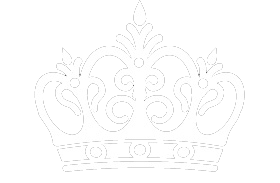Is It Difficult to Open a Jewelry Store?
- kukkikja
- Dec 12, 2024
- 2 min read

Opening a jewelry store can be an exciting venture, blending creativity with commerce. However, it requires thorough planning, dedication, and an understanding of the unique challenges associated with the jewelry industry. Here's a closer look at the journey to opening a jewelry store, focusing on the key aspects you’ll need to consider.
1. Choosing Your Niche and Target Market
Before diving into the jewelry business, it's essential to identify your niche. Will your store focus on fine jewelry, custom-made pieces, or trendy fashion jewelry? Your target audience, whether high-end clients, eco-conscious buyers, or everyday customers, will guide your decisions about inventory, pricing, and marketing.
Key Insight: A clearly defined niche helps you stand out in the competitive jewelry market.
2. Understanding the Costs
Launching a jewelry store involves significant upfront investments. Costs can include inventory, store setup, marketing, licenses, and security. Fine jewelry, especially items with precious stones or metals, demands a higher budget compared to fashion jewelry.
Tip: Start with a curated collection rather than overstocking, allowing room to learn what your customers prefer.
3. Sourcing Quality Products
Whether you’re creating custom designs or sourcing from suppliers, quality is non-negotiable. Build relationships with reliable jewelry manufacturers, wholesalers, or gemologists to ensure authenticity and craftsmanship.
Focus Keyword: Work with trusted sources to stock your jewelry store with exceptional pieces.
4. Navigating Legalities and Certifications
Running a jewelry store requires compliance with industry regulations, including licenses, trademarks, and fair-trade certifications. For stores dealing with diamonds and precious metals, certifications such as GIA for diamonds or Fairmined for gold can add credibility.
5. Building a Strong Brand
A jewelry store thrives on trust, aesthetics, and brand loyalty. Create a memorable brand identity by focusing on stunning designs, excellent customer service, and meaningful storytelling about your pieces. Emphasize aspects like sustainability or bespoke services to attract modern buyers.
6. Setting Up the Store: Physical or Online
You can opt for a brick-and-mortar store, an e-commerce website, or a combination of both. While a physical store offers a personalized experience, online platforms expand your reach and cater to tech-savvy shoppers.
7. Marketing and Promotion
Launching a successful jewelry store depends on visibility. Utilize social media platforms like Instagram, Pinterest, and Facebook to showcase your pieces with high-quality images. Partner with influencers, run promotions, and highlight customer reviews to build trust.
8. Challenges to Overcome
Opening a jewelry store comes with challenges like:
Competing with established brands.
Maintaining consistent cash flow.
Protecting high-value inventory with security measures.
Final Thoughts
Opening a jewelry store isn’t impossible, but it requires careful planning, a solid strategy, and a passion for delivering quality and value. Whether you dream of running a boutique fine jewelry shop or a modern online jewelry store, success lies in understanding your market, offering unique designs, and building strong customer relationships.

























Comments